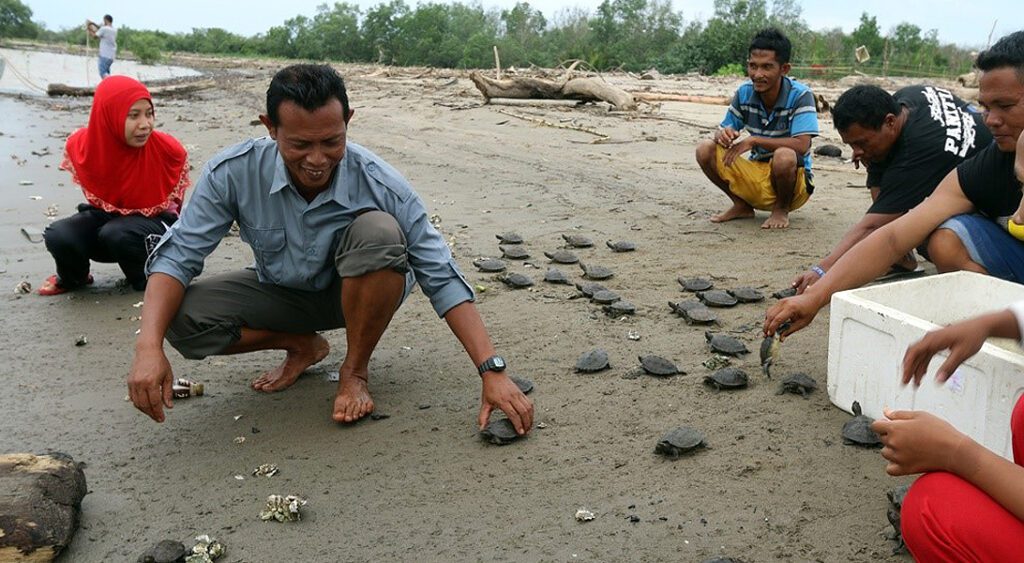The Plight of the Captivating Painted Terrapin
The Painted Terrapin gets its name from the bright coloration males exhibit during breeding season. In fact, Painted Terrapins exhibit sexual dichromatism, a type of sexual dimorphism, where the sexes differ in color. Another distinction between the male and female Painted Terrapins is that the females are larger than the males.
Found in Indonesia, Malaysia, Thailand, their habitat is typically fresh and brackish water tidal rivers, mangrove forests, and estuaries. These turtles are primarily herbivorous and feed on aquatic plants and grasses, overhanging and fallen leaves and fruit of figs and mangroves, and occasionally forages for aquatic invertebrates.
Once widespread and abundant, intensified poaching in the last 40 years has led to the decline of the Painted Terrapin’s wild populations.

To protect this species, Turtle Survival Alliance has supported the Satucita Foundation‚ Painted Terrapin conservation program Sumatra, Indonesia. This program includes nest patrols, eggs relocation to protected terrapin hatcheries, hatchling headstarting, and juvenile release.
And, once juveniles are released, they are still supported through the habitat preservation efforts by our program, including waste cleanup and restoration of nesting beaches and coastal mangrove forests.
Thanks to these and other conservation efforts, the Painted Terrapin is protected from collection in every country in which it naturally occurs.
- Pictured: Painted Terrapin (Batagur borneoensis)
- Countries of Origin: Indonesia, Malaysia, Thailand
- Habitat: Fresh and brackish water tidal rivers, mangrove forests, estuaries
- Wild Population: Decreasing, exceedingly rare
- IUCN Red List Status: Critically Endangered
- Threats: Collection of adults and eggs for food and pets, fisheries bycatch, coastal habitat destruction, sand mining
